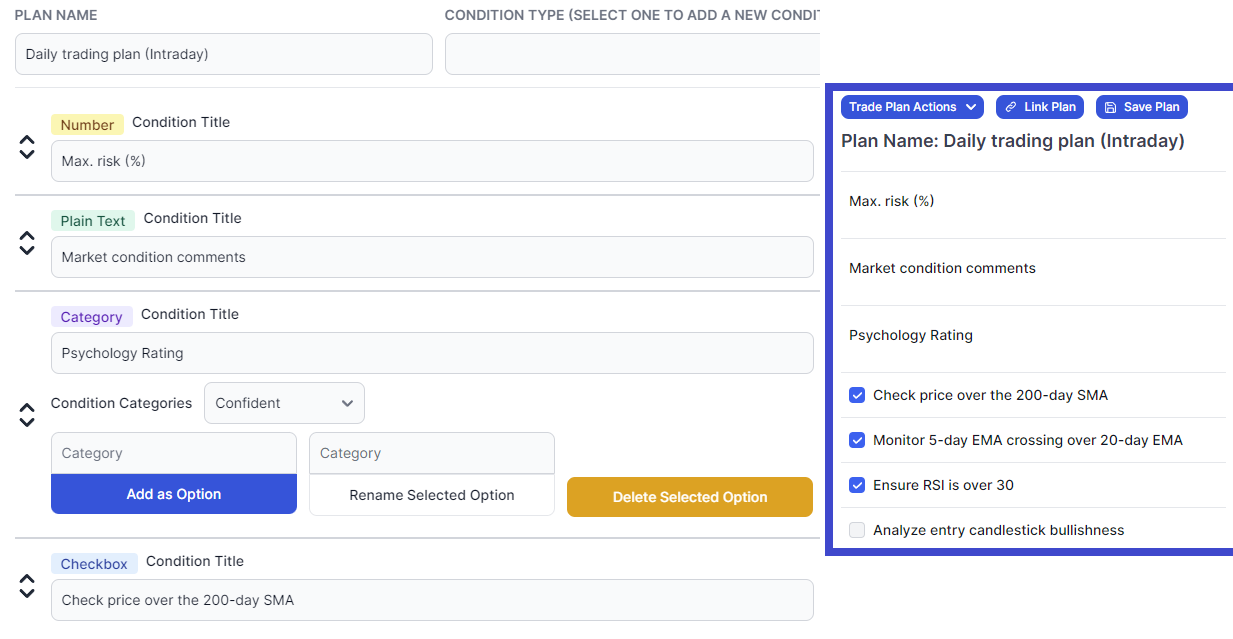Did you know that the first recorded stock trade happened in 1602? Fast forward over four centuries, and day trading options has become a popular strategy for investors looking to capitalize on market fluctuations. This beginner’s guide breaks down the essentials of day trading options, including what it is, how to get started, and the best strategies to employ. You’ll learn key terminology, how to select the right options, recommended tools and platforms, and the inherent risks involved. We also cover the importance of technical analysis, capital management, and common pitfalls to avoid. With insights on market conditions and volatility, this guide from DayTradingBusiness equips you with the knowledge to enhance your trading decisions and develop a solid day trading plan. Whether you're new to options trading or looking to refine your skills, this resource has you covered.
What is day trading options?
Day trading options involves buying and selling options contracts within the same trading day to profit from short-term price movements. Traders typically focus on high volatility stocks, using strategies like scalping or momentum trading. This approach requires quick decision-making and a solid understanding of options pricing, including factors like time decay and implied volatility. Successful day traders often use technical analysis and charts to identify entry and exit points.
How do I start day trading options as a beginner?
To start day trading options as a beginner, follow these steps:
1. Educate Yourself: Learn the fundamentals of options trading, including key terms like calls, puts, strike price, and expiration dates.
2. Choose a Brokerage: Select a brokerage that offers options trading and has a user-friendly platform. Look for low commissions and educational resources.
3. Practice with a Simulator: Use a paper trading account to practice trading options without risking real money. This helps you understand strategies and market dynamics.
4. Develop a Strategy: Create a clear trading plan outlining your goals, risk tolerance, and specific strategies, such as buying calls or puts.
5. Start Small: Begin with a small amount of capital to limit your risk while you gain experience.
6. Monitor the Market: Keep an eye on market news and trends that can affect options prices. Use technical analysis to identify entry and exit points.
7. Manage Risk: Set stop-loss orders to protect your investments and avoid emotional trading decisions.
8. Review and Adjust: Regularly review your trades to learn from your successes and mistakes, adjusting your strategy as needed.
Start with these steps to build your skills and confidence in day trading options.
What are the best strategies for day trading options?
1. Understand the Basics: Familiarize yourself with options terminology, pricing, and market mechanics.
2. Choose Liquid Options: Focus on options with high open interest and volume to ensure easy entry and exit.
3. Use Technical Analysis: Analyze charts for patterns, support, and resistance levels to inform your trades.
4. Set Clear Goals: Define your profit targets and loss limits before entering a trade to manage risk effectively.
5. Practice Risk Management: Use stop-loss orders to protect your capital and avoid emotional decision-making.
6. Start Small: Begin with a few contracts to gain experience without risking significant capital.
7. Stay Updated on News: Monitor market news and events that can impact stock prices and volatility.
8. Keep a Trading Journal: Document your trades to analyze what works and adjust your strategies accordingly.
9. Be Disciplined: Stick to your trading plan and avoid impulsive trades based on emotions or market noise.
10. Learn from Mistakes: Review unsuccessful trades to understand what went wrong and improve your strategy.
What are the key terms I need to know for options trading?
1. Call Option: A contract giving the holder the right to buy an asset at a specified price before expiration.
2. Put Option: A contract giving the holder the right to sell an asset at a specified price before expiration.
3. Strike Price: The predetermined price at which the underlying asset can be bought or sold.
4. Expiration Date: The date when the option contract becomes invalid.
5. Premium: The price paid for purchasing an option.
6. In the Money (ITM): A term for options that have intrinsic value; for calls, the asset price is above the strike price; for puts, below.
7. Out of the Money (OTM): Options that have no intrinsic value; for calls, the asset price is below the strike price; for puts, above.
8. At the Money (ATM): When the asset price is equal to the strike price.
9. Implied Volatility: A measure of market expectations for future volatility, impacting option pricing.
10. Open Interest: The total number of outstanding option contracts that have not been settled.
11. Delta: Measures how much the option's price is expected to change per $1 change in the underlying asset.
12. Theta: Represents the rate at which an option's price decreases as it approaches expiration.
13. Liquidity: Refers to how easily an option can be bought or sold without affecting its price.
14. Margin: The collateral required to open a position in options trading.
15. Assignment: When the option seller is obligated to fulfill the terms of the contract when the option is exercised.
How do I choose the right options to trade daily?

To choose the right options for daily trading, start by identifying stocks with high volatility and liquidity. Look for options with tight bid-ask spreads to minimize costs. Focus on shorter expiration dates, ideally within a week. Use technical analysis to spot potential price movements. Monitor news and earnings reports that could impact stock prices. Finally, define your risk tolerance and set clear entry and exit points.
What tools and platforms are recommended for day trading options?
For day trading options, recommended tools and platforms include:
1. Brokerage Platforms: Thinkorswim by TD Ameritrade, E*TRADE, and Interactive Brokers offer robust trading features and analytics.
2. Charting Software: TradingView and MetaTrader provide advanced charting tools and technical indicators.
3. Options Scanners: Benzinga Pro and Trade Ideas help identify potential trades based on specific criteria.
4. News Feeds: MarketWatch and Yahoo Finance deliver real-time news and updates that impact options pricing.
5. Risk Management Tools: OptionsXpress and tastyworks offer risk assessment and strategy development tools.
Choose a combination that suits your trading style and strategy.
What are the risks associated with day trading options?
The risks of day trading options include significant financial loss due to high volatility, time decay affecting option value, and the potential for emotional decision-making. The complexity of options strategies can lead to misunderstandings, resulting in poor trades. Additionally, low liquidity in some options can cause wider spreads, increasing costs. Lastly, leverage can amplify losses quickly, putting your capital at risk.
How can I manage my capital while day trading options?
To manage your capital while day trading options, follow these tips:
1. Set a Budget: Decide how much capital you’re willing to risk per trade and stick to it.
2. Use Position Sizing: Allocate a fixed percentage of your capital to each trade, typically 1-2%.
3. Implement Stop Losses: Set stop-loss orders to limit potential losses and protect your capital.
4. Diversify: Don’t put all your funds into one trade; spread your risk across different options.
5. Monitor Market Conditions: Stay updated on market trends to adjust your trading strategy accordingly.
6. Keep Emotions in Check: Stick to your trading plan and avoid impulsive decisions based on fear or greed.
By following these strategies, you can effectively manage your capital while day trading options.
What is the importance of technical analysis in options trading?
Technical analysis is crucial in options trading because it helps traders identify price trends and patterns, making informed decisions on when to buy or sell options. By analyzing charts, indicators, and historical data, traders can forecast potential price movements. This approach enhances risk management, allowing traders to set precise entry and exit points, and improves the timing of trades. Ultimately, technical analysis empowers options traders to capitalize on short-term price fluctuations, increasing their chances of profitability.
How do I develop a day trading plan for options?

To develop a day trading plan for options, follow these steps:
1. Set Clear Goals: Define your profit targets and risk tolerance. Decide how much capital you're willing to risk daily.
2. Choose Your Strategy: Pick a strategy that suits your style, like scalping or momentum trading. Focus on specific options strategies, such as buying calls/puts or selling spreads.
3. Select a Market: Identify which stocks or indices you’ll trade options on. Look for high volatility and liquidity.
4. Create Entry and Exit Rules: Determine your criteria for entering trades, such as technical indicators or news events, and set clear exit points for profits and losses.
5. Risk Management: Establish stop-loss orders to limit losses. Never risk more than a fixed percentage of your trading capital on a single trade.
6. Practice with a Simulator: Use a trading simulator to test your plan without financial risk. Refine your strategy based on the results.
7. Review and Adjust: Regularly analyze your trades to identify strengths and weaknesses. Adjust your plan as necessary based on performance.
8. Stay Informed: Keep up with market news and trends that may affect your options trades.
This structured approach will help you build a solid day trading plan for options.
Learn about How to Develop a Futures Day Trading Plan
What timeframes should I use for day trading options?
For day trading options, focus on short timeframes like 1-minute, 5-minute, or 15-minute charts. These allow you to react quickly to market movements. Most traders also monitor the daily chart for overall trends. Ideally, look for options with expiration times of the same day or within a week to maximize potential gains.
How do market conditions affect day trading options?
Market conditions significantly influence day trading options. High volatility can create opportunities for quick profits as prices fluctuate rapidly. In contrast, low volatility may lead to fewer price movements, making it harder to execute profitable trades.
Liquidity is also crucial; during favorable market conditions, options often have tighter spreads, allowing for better entry and exit points. Economic news, earnings reports, and geopolitical events can all impact market sentiment, affecting option pricing and strategies. Day traders must adapt to these conditions by adjusting their strategies, such as choosing different strike prices or expiration dates based on market trends.
Learn about How to Find the Right Market for Day Trading
What are the common mistakes beginners make in options trading?
Common mistakes beginners make in options trading include:
1. Lack of Knowledge: Not understanding options basics like calls, puts, and expiration dates.
2. Ignoring Risk Management: Failing to set stop-loss orders or position sizes, leading to large losses.
3. Chasing Losses: Trying to recover losses quickly, which often results in deeper losses.
4. Overtrading: Making too many trades due to excitement or impatience, often without proper analysis.
5. Neglecting Market Trends: Disregarding market conditions and news that impact options prices.
6. Poor Timing: Entering or exiting trades at the wrong times, often due to emotion rather than strategy.
7. Misunderstanding Volatility: Not accounting for implied volatility when choosing options, which can affect pricing significantly.
8. Not Having a Plan: Trading without a clear strategy or exit plan, leading to impulsive decisions.
Avoiding these mistakes can improve your chances of success in options trading.
How can I improve my decision-making in day trading options?
To improve your decision-making in day trading options, follow these steps:
1. Educate Yourself: Learn the fundamentals of options, including terms like strike price, expiration, and implied volatility.
2. Develop a Strategy: Create a clear trading plan that outlines entry and exit points, risk management, and profit targets.
3. Use Technical Analysis: Analyze charts and indicators to identify trends and potential price movements. Focus on key patterns and signals.
4. Monitor Market News: Stay updated on economic events and news that can impact stock prices. This information can influence your trading decisions.
5. Practice Risk Management: Never risk more than you can afford to lose. Use stop-loss orders to limit potential losses.
6. Review Your Trades: After each trading session, assess what worked and what didn’t. Learn from your successes and mistakes.
7. Stay Disciplined: Stick to your trading plan and avoid emotional decisions. Consistency is key in day trading.
8. Join a Community: Engage with other traders to exchange ideas, strategies, and insights. This can enhance your knowledge and decision-making skills.
Implement these strategies to make more informed and confident decisions in your day trading options.
What role does volatility play in day trading options?
Volatility is crucial in day trading options because it affects option pricing and potential profit. Higher volatility increases the likelihood of significant price swings, which can lead to larger gains. Traders often look for volatile stocks to capitalize on rapid movements. Understanding implied volatility helps traders assess whether options are over or underpriced, guiding their buy and sell decisions. Managing risk during volatile conditions is essential to protect profits and minimize losses.
Learn about The Role of Implied Volatility in Day Trading Options
## How Can Beginners Effectively Use Options in Day Trading?

Understanding options in day trading involves grasping the basic types of options: calls and puts. A call option gives you the right to buy an asset at a set price, while a put option gives you the right to sell. Focus on key concepts like strike price, expiration date, and implied volatility. For beginners, a solid grasp of these terms is crucial for effective trading strategies.
Learn more about: Understanding Options in Day Trading
Learn about How to Use Technical Analysis for Options Day Trading
How do I stay updated on market news for options trading?
To stay updated on market news for options trading, follow these steps:
1. Subscribe to Financial News Websites: Use platforms like Bloomberg, CNBC, and Reuters for real-time updates.
2. Follow Market Analysts on Social Media: Twitter and LinkedIn are great for insights from traders and analysts.
3. Use Trading Apps: Apps like Thinkorswim and Robinhood provide news feeds and alerts on options.
4. Join Trading Forums and Communities: Engage in forums like Reddit's r/options for discussions and tips.
5. Listen to Podcasts: Find podcasts focused on options trading for expert opinions and market analysis.
6. Set Google Alerts: Create alerts for specific options trading topics to receive the latest news directly.
By combining these methods, you'll keep your options trading informed and responsive to market changes.
Learn about How to Stay Updated on Crypto Market News for Day Trading
Conclusion about Beginner’s Guide to Day Trading Options
In summary, mastering day trading options requires a solid understanding of key concepts, effective strategies, and the right tools. Beginners should focus on developing a disciplined trading plan, managing risks, and continuously improving their decision-making skills. By leveraging resources and insights from DayTradingBusiness, traders can enhance their knowledge and navigate the dynamic options market more effectively.
Learn about Frequently Asked Questions About Day Trading Options